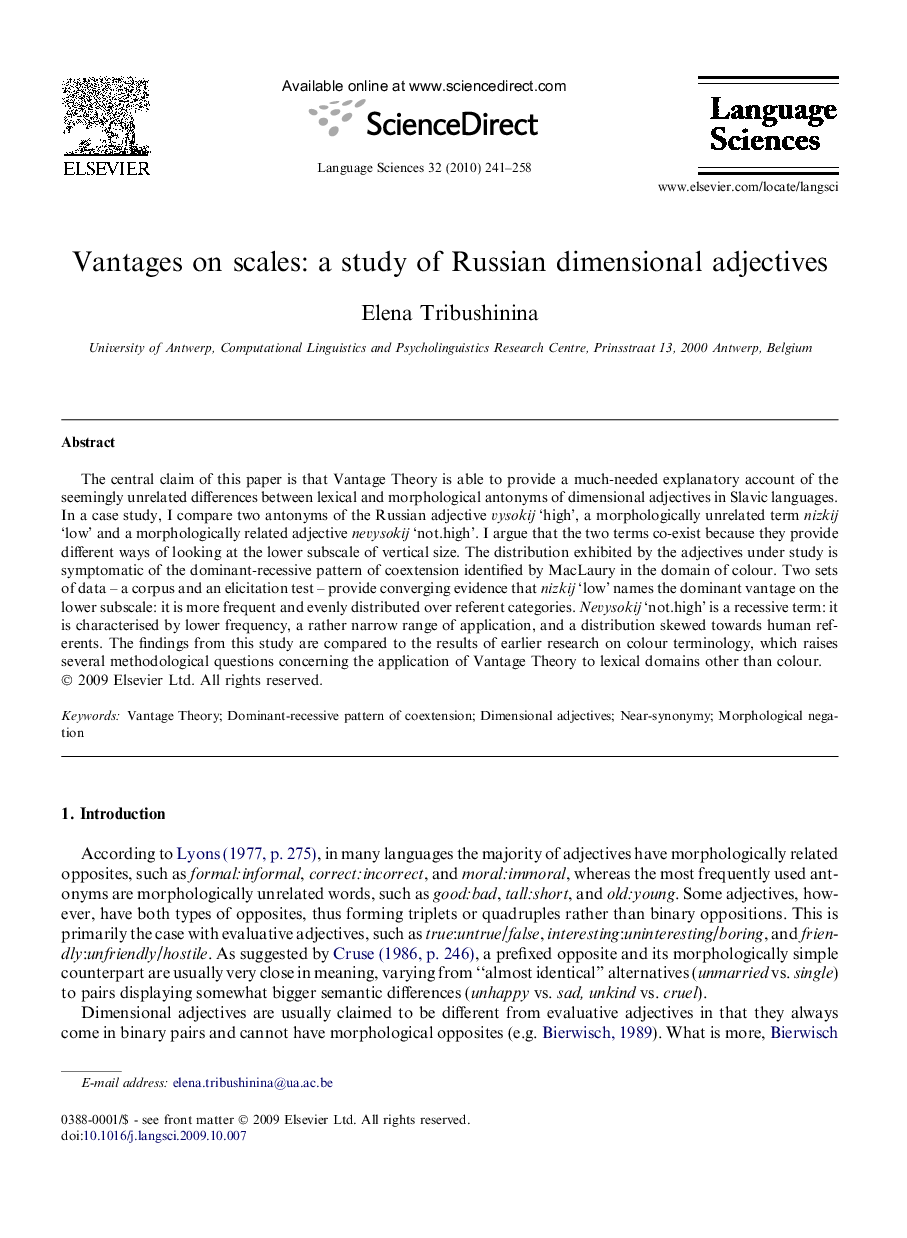| Article ID | Journal | Published Year | Pages | File Type |
|---|---|---|---|---|
| 1103451 | Language Sciences | 2010 | 18 Pages |
Abstract
The central claim of this paper is that Vantage Theory is able to provide a much-needed explanatory account of the seemingly unrelated differences between lexical and morphological antonyms of dimensional adjectives in Slavic languages. In a case study, I compare two antonyms of the Russian adjective vysokij 'high', a morphologically unrelated term nizkij 'low' and a morphologically related adjective nevysokij 'not.high'. I argue that the two terms co-exist because they provide different ways of looking at the lower subscale of vertical size. The distribution exhibited by the adjectives under study is symptomatic of the dominant-recessive pattern of coextension identified by MacLaury in the domain of colour. Two sets of data - a corpus and an elicitation test - provide converging evidence that nizkij 'low' names the dominant vantage on the lower subscale: it is more frequent and evenly distributed over referent categories. Nevysokij 'not.high' is a recessive term: it is characterised by lower frequency, a rather narrow range of application, and a distribution skewed towards human referents. The findings from this study are compared to the results of earlier research on colour terminology, which raises several methodological questions concerning the application of Vantage Theory to lexical domains other than colour.
Keywords
Related Topics
Social Sciences and Humanities
Arts and Humanities
Language and Linguistics
Authors
Elena Tribushinina,
